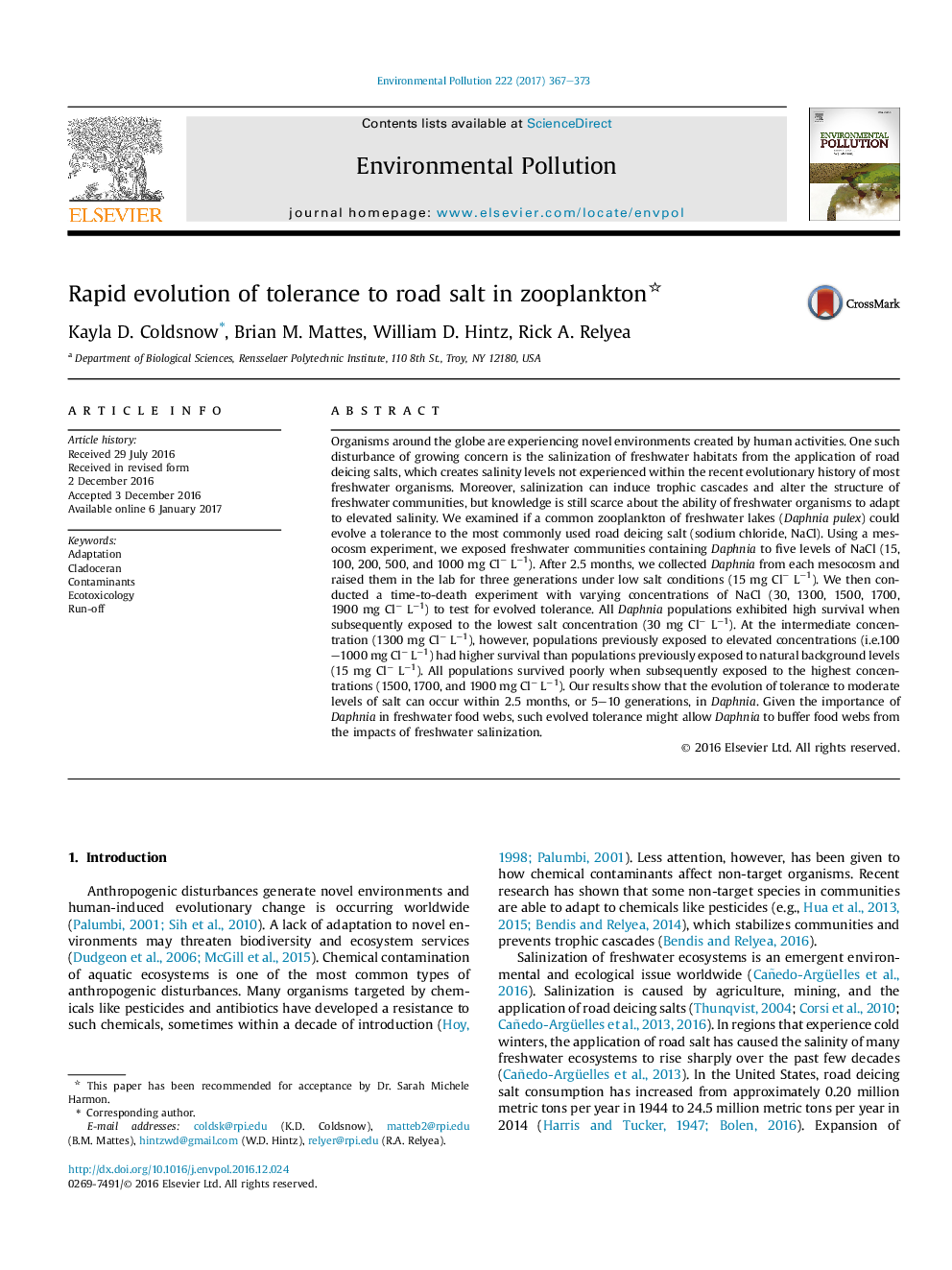| کد مقاله | کد نشریه | سال انتشار | مقاله انگلیسی | نسخه تمام متن |
|---|---|---|---|---|
| 5749031 | 1619151 | 2017 | 7 صفحه PDF | دانلود رایگان |

- Daphnia were exposed to environmentally relevant levels of road salt (NaCl).
- After 2.5-months, Daphnia were tested for an evolved tolerance to road salt.
- Our results indicate that Daphnia evolved a tolerance to road salt.
- However, there was a limit to the evolved tolerance.
- Survival was similar in all populations at high concentrations (â¥1500 mg Clâ Lâ1).
Organisms around the globe are experiencing novel environments created by human activities. One such disturbance of growing concern is the salinization of freshwater habitats from the application of road deicing salts, which creates salinity levels not experienced within the recent evolutionary history of most freshwater organisms. Moreover, salinization can induce trophic cascades and alter the structure of freshwater communities, but knowledge is still scarce about the ability of freshwater organisms to adapt to elevated salinity. We examined if a common zooplankton of freshwater lakes (Daphnia pulex) could evolve a tolerance to the most commonly used road deicing salt (sodium chloride, NaCl). Using a mesocosm experiment, we exposed freshwater communities containing Daphnia to five levels of NaCl (15, 100, 200, 500, and 1000 mg Clâ Lâ1). After 2.5 months, we collected Daphnia from each mesocosm and raised them in the lab for three generations under low salt conditions (15 mg Clâ Lâ1). We then conducted a time-to-death experiment with varying concentrations of NaCl (30, 1300, 1500, 1700, 1900 mg Clâ Lâ1) to test for evolved tolerance. All Daphnia populations exhibited high survival when subsequently exposed to the lowest salt concentration (30 mg Clâ Lâ1). At the intermediate concentration (1300 mg Clâ Lâ1), however, populations previously exposed to elevated concentrations (i.e.100-1000 mg Clâ Lâ1) had higher survival than populations previously exposed to natural background levels (15 mg Clâ Lâ1). All populations survived poorly when subsequently exposed to the highest concentrations (1500, 1700, and 1900 mg Clâ Lâ1). Our results show that the evolution of tolerance to moderate levels of salt can occur within 2.5 months, or 5-10 generations, in Daphnia. Given the importance of Daphnia in freshwater food webs, such evolved tolerance might allow Daphnia to buffer food webs from the impacts of freshwater salinization.
206
Journal: Environmental Pollution - Volume 222, March 2017, Pages 367-373